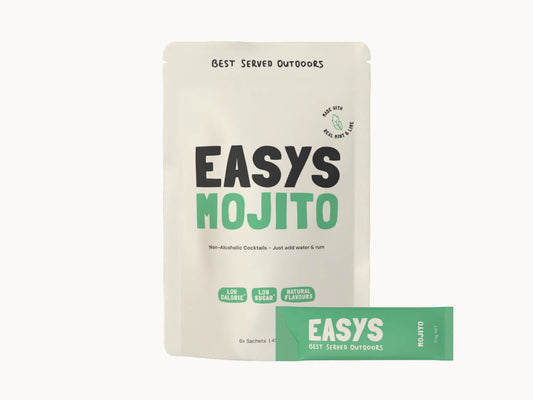
Rakiura Track: A Coastal and Forest Adventure
The Rakiura Track is a 3-day journey through one of New Zealand’s most peaceful and remote wildernesses, located on Stewart Island. Known for its lush forests, pristine beaches, and abundant wildlife, this track offers a chance to disconnect from the world and immerse yourself in nature.
-
About the Rakiura Track
- Track Type: 32km Loop
- Sleeping: Hut or Camping
- Start & End Point: Lee Bay – Fern Gully
- Difficulty: 2/5
- Fitness Rating: Low to Moderate
- Trip Length: 3 days
- Best Time of Year to Go: November – April
- Track Type: 32km Loop
-
How to book the Rakiura Track
Department of Conservation websiteVisit the Department of Conservation (DOC) website to learn more about when you can book your trip, and anything else you need to know.
Track Description
The track begins and ends near Oban, the island’s main settlement. It follows a mix of coastal and inland sections, with boardwalks through wetlands, short climbs over low ridges, and wide, well-formed paths. You’ll pass Māori Beach and Port William, cross forested headlands, and spend nights in comfortable DOC huts or campsites set beside the water.
Trail Tip: Be sure to bring a good pair of waterproof boots, as the Rakiura Track can be quite muddy in certain sections.

What Makes the Track Special
The Rakiura Track is unique for its peaceful solitude and abundant wildlife. Stewart Island is home to some of New Zealand's most iconic birds, including the kiwi, and the track provides plenty of opportunities for birdwatching. The track also offers quiet beaches, untouched forests, and sweeping coastal views, making it one of the most serene and special hikes in the country.
Day-by-Day Itinerary
Day 1 – Lee Bay to Port William Hut
- Distance: 8.1 km
- Time: 3–4 hours
- The walk starts at Lee Bay, a short road or shuttle ride from Oban. Follow the coast past Little River and the historic sawmilling relics of Māori Beach before arriving at Port William Hut, set in a sheltered bay.
Day 2 – Port William Hut to North Arm Hut
- Distance: 13 km
- Time: 6 hours
- Climb gently through regenerating forest to the highest point of the track (~200 m) before descending to Paterson Inlet. Expect rich birdlife and peaceful bush walking.
Day 3 – North Arm Hut to Fern Gully
- Distance: 11 km
- Time: 4–4.5 hours
- Skirt the shoreline of Paterson Inlet, cross small headlands, and pass quiet bays like Sawdust Bay before finishing at Fern Gully. From here it’s about 2 km along the road to Oban.
Highlights
- Kiwi spotting opportunities — one of the best places in NZ to see them in the wild
- Golden sands and heritage relics at Māori Beach
- Calm, sheltered bays perfect for photos and relaxing
- Birdsong from kaka, tui, and parakeets in lush native forest
- Big night skies with a chance to see the Aurora Australis
Difficulty & Fitness
Classed as a Great Walk/Easier tramping track, the Rakiura Track is suitable for people with moderate fitness. The track is well formed, with gentle gradients and no major river crossings, but you’ll still need to carry a full pack.
Best Time to Go
The track is open year-round. November to April offers warmer temperatures, longer daylight hours, and more stable ferry crossings. Winter walking is possible but expect cooler, wetter weather and fewer daylight hours.
Accommodation & Booking
There are two Great Walk huts — Port William Hut and North Arm Hut — plus several campsites. All must be booked in advance through the DOC website.
Huts have bunks, mattresses, wood burners, tables, benches, water supply, and toilets. No cooking gear, bedding, or food is provided.
What to Pack for New Zealand's Great Walks
New Zealand’s Great Walks are stunning, but they’re no stroll in the park. The weather can change fast, huts vary in what they offer, and you’ll burn a heap of calories each day — so packing right makes all the difference. Here’s a practical list based on what we actually take tramping.
Getting There
Ferry: 1-hour crossing from Bluff to Oban
Flight: 20 minutes from Invercargill to Oban airstrip
From Oban, walk, arrange a shuttle, or take a water taxi to the track start at Lee Bay or Fern Gully.
What to Pack for New Zealand's Great Walks
New Zealand’s Great Walks are stunning, but they’re no stroll in the park. The weather can change fast, huts vary in what they offer, and you’ll burn a heap of calories each day — so packing right makes all the difference. Here’s a practical list based on what we actually take tramping.
Essential Gear
Stick to the basics and don’t overpack — weight adds up fast. Bring only what you’ll actually use and make sure it holds up in wet, cold, and muddy conditions.
- Backpack (40–60L) – Comfortable and supportive. You’ll feel every gram on long climbs.
- Rainproof pack cover or liner – Expect rain. Keep your gear dry inside your pack.
- Sleeping bag – Lightweight but warm enough for cold hut nights.
- Cookware – Most huts have gas and stoves (but check with DOC); just bring pot, bowl, mug, and a spork.
- Head torch – More reliable than your phone light, especially for late-night toilet runs.
- Water bladder or drink bottle – Stay hydrated across long days on the trail.
- Water filter or tablets – Streams are usually safe but better to treat when unsure.
- First aid kit – Include blister gear, painkillers, antiseptic, and plasters.
- Map or topo – Phone GPS can die; printed maps always work.
- Microfibre towel – Quick drying and lightweight for hut use.
- Ziplocks or dry bags – For dirty clothes, food, and rubbish (which you must carry out).
- Ear plugs – Huts get loud. Snoring is guaranteed.
Clothing (Layer Up!)
Keep it simple: one set of hiking gear, one set of clean gear for huts. Use merino where possible — it’s warm, lightweight, and doesn’t stink.
- Thermal base layers (top & bottom) – For warmth at night or in cold weather.
- Waterproof rain jacket – Essential year-round. Weather changes fast.
- Down jacket or fleece – Adds warmth in huts or cold evenings.
- Merino t-shirt – Breathable and odour-resistant for hiking days.
- Hiking socks & undies – Bring spares. Dry feet = happy feet.
- Shorts / swimwear – Optional, but nice for river dips or warm days.
- Warm hat, sun hat & gloves – Cover both ends of the weather spectrum.
- Hiking boots – Waterproof and broken-in to avoid blisters.
- Jandals/slides – For relaxing in the hut and airing out feet.
Food
Bring enough for every day plus one extra — and don’t underestimate how much you’ll eat. You'll be burning through energy fast.
- Dehydrated meals – Lightweight and easy to cook in huts.
- Oats or muesli – Reliable breakfast that packs small.
- Wraps with PB&J – No refrigeration needed and calorie dense.
- Bars, trail mix – Great for snacking between stops.
- Coffee or tea – For morning motivation and hut chill time.
Nice-to-haves
Not essential, but these can make your trip more comfortable if you have the space.
- Power bank & charging cable – For your phone, GPS, or headlamp if rechargeable.
- Sleeping bag liner – Adds warmth and keeps your bag clean.
- Book or cards – Helps pass time at the hut without reception.
Toiletries
Go lightweight, but don’t skip the essentials. Keep it all together in a dry bag or ziplock.
- Toothbrush & toothpaste
- Deodorant
- Sunscreen – The UV in NZ is no joke, even when it’s cloudy.
- Insect repellent – Sandflies are brutal in forested and coastal areas.
- Hand sanitiser
- Vaseline or anti-chafe cream
For the end of the day
There’s nothing better than reaching the hut after a solid day on the trail. Whether you’re drying your boots by the fire, sitting beside a lake, or watching the sunset from a ridgeline — it’s the perfect time to crack an Easys.
Easys are lightweight powdered cocktails made for the outdoors. Just add water (and a splash of spirits if you want) and you’ve got yourself a refreshing drink — no heavy bottles needed. Easy to carry. Easy to make. Bloody good at the end of a hike.
-
Mojito - 6 Pack
5.0 / 5.0
(8) 8 total reviews
Regular price $19.99 NZDRegular priceUnit price / per -
Margarita - 6 Pack
5.0 / 5.0
(6) 6 total reviews
Regular price $19.99 NZDRegular priceUnit price / per -
Piña Colada - 6 Pack
4.86 / 5.0
(8) 8 total reviews
Regular price $19.99 NZDRegular priceUnit price / per
book your great walk
Find more information about New Zealand's Great Walks on the Department of Conservation's website. From here, you'll find everything you need about booking tracks. We'll see you out there!
Rakiura Great Walk FAQs
Can I walk the track in either direction?
Yes - most walk anti-clockwise from Lee Bay.
Are dogs allowed?
No - dogs and other pets are not permitted in Rakiura National Park.
Do I need to treat drinking water?
DOC recommends boiling or treating water from huts and streams.
Is there mobile coverage?
Very limited - don’t rely on it.
Can I shorten the track?
Yes - water taxis can transport you to or from Port William or North Arm.


